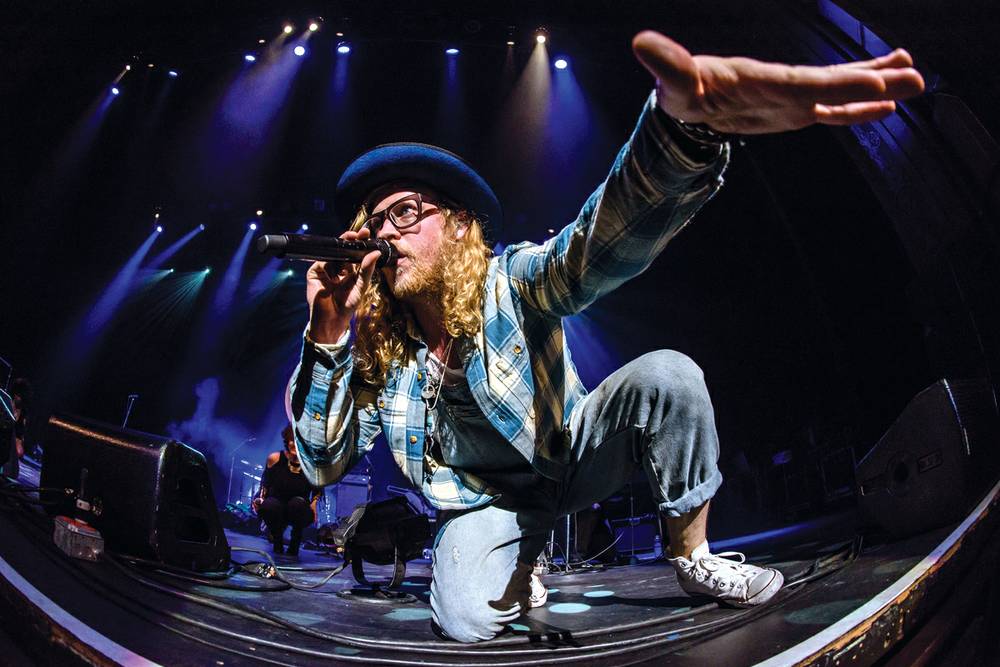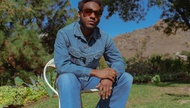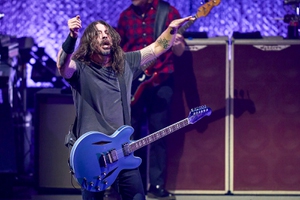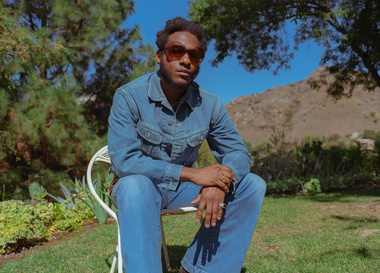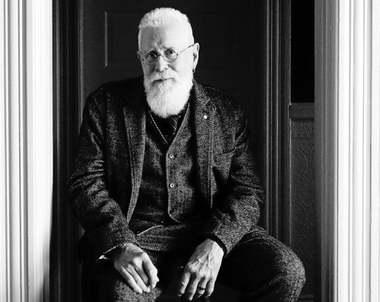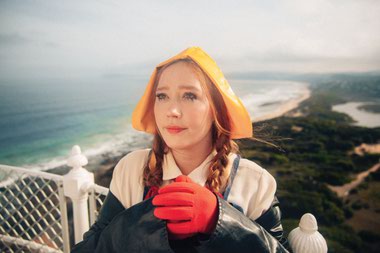Allen Stone’s new album, Radius, marks a seismic leap forward for the native of the tiny town of Chewelah, Washington. There’s still no shortage of deep soul grooves, righteous funk, gospel and folk, but there’s a new urgency to the music that makes the record a real treat. The singer-songwriter checked in from Chicago about opening for Stevie Wonder, what led him to soul music as a teenager and how the new record came together.
Radius feels like a tighter record—everything is crisper and more focused, from the grooves to your vocal performances. To what do you attribute that? A lot of it has to do with playing close to 600 shows between the time I recorded my last record and recorded this record. You grow as a musician, and you evolve as a songwriter and performer. The more you do something, the better you get at it—or maybe the more precise you get at it.
And then also the producers that have their hand in it. Specifically, [Magnus] Tingsek, he did the majority of the record. When I went in to do this record, I really wanted to find my sound. ... Like, when people heard it, they would go, “Gotta be Allen Stone.” I felt like on the last record, it was more so like a throwback soul revue kind of thing. I was sort of repeating what other people had done. And I wanted to branch out and make something fresh that people wouldn’t hear too often.
Tingsek is a Swedish singer-songwriter. How did you guys meet, and what did he bring to the music as you were working together? We met in 2012 on a tour, but I had heard his music back in 2010, maybe even 2009. A friend showed me his work, his record Restless Soul, and I was just blown away—I was like, “Whoa, nobody sounds like this. This is so fresh. It just has everything I want—funk, soul, R&B, a little bit of troubadour, singer-songwriter folk.” It was brilliant. I became his biggest fan, really. I was the guy at every party who would be like, “Have you checked this out?” (laughs)
In 2012, after my self-titled [album] had started to gain some momentum, I hollered at him. I was like, “Hey, man, we’re doing this tour. I know you don’t have any real fanbase over in the States, but what do you think? Do you want to come over and do a tour with me? I’ll give you a bunk spot on my bus.” I think that year we had 75 shows in like 97 days or something crazy like that. And he was just like, “Yeah, totally. I’ll do it.” He came and lived on the bus with us and played every show with us, and we just became really close, really tight buddies.
I went over there on this record project with Capitol [Records], as a writing project, just to see what we could write. We didn’t really know who was going to do the record yet. The first two songs we wrote were, like, still my favorite two songs I’ve ever written in my life. They were “Fake Future” and “Circle.” Much to Capitol Records’ chagrin, I was like, “I don’t want to go and do it with some big-name producer or some factory producer. I want to do it with Tingsek.” Luckily, they let me.
When you guys were writing the album, were there any artists in particular that stood out as influences? Tingsek really loves old Beatles stuff, like The Beatles’ older work. He also loves D’Angelo, so there’s all those influences in there. Parliament, Marvin Gaye and Stevie Wonder. We both fall into that soul, R&B vibe, [but] we didn’t want to be predictable. For me, even though I was on a pop label, essentially, I never wanted to be pigeonholed as a pop artist. I wanted to be popular, but I didn’t want to sound like a pop artist. I don’t really enjoy the sound of much pop music, musically.
Whenever we were in the studio, we would challenge each other—specifically, Tingsek would challenge me—to take it somewhere else that we wouldn’t normally take it. If we were coming up on a chorus, my instincts would be to maybe repeat the verse progression and just step up my vocal an octave or a fifth or something. He would completely flip that on its end, and take it a different key almost.
That, to me, expanded my musicality; it expanded my artistry; it expanded my ear. It helped me think outside the box of what is quote-unquote music. People think music can be broken down into a science, and it can’t be, I don’t believe. I think music is so much more than a theory. It’s the colors; it’s paintings; it’s art. It’s this whole different thing that can come together, and if it sounds good it sounds good. It doesn’t need to make sense on paper.
You grew up in a religious household and discovered soul music as a teenager. What was it about the genre that you really connected with? It was just the feeling of it. I found love for music because of the emotion of it. Growing up and singing in the church and singing with a congregation of people was really powerful. That’s one of the most powerful parts of music, is a whole body of people that don’t know each other singing the same thing. And you’ve seen it play out throughout history—people that were oppressed would have songs that they would all sing together to brighten their mood, or to just dialogue about their current situation.
But I saw church music [as] very limiting, as far as who you could reach. Then, in turn, I ended up leaving the church. I think what I heard from R&B music was that feeling that I had always strived for and looked for when I first got into music, [but] in a more secular realm.
One of your musical heroes is Stevie Wonder, and you had the chance to open for him this year. Were you guys able to meet and talk? I got to meet him. We didn’t get to talk long, unfortunately. The poor man’s pulled in so many different directions, and he’s [had an] impact on so many people and blessed so many lives with his music. I got to meet him and tell him I loved him and tell him thank you for his art and how he inspired me. It wasn’t the time or place to sit down and pick his brain about his childhood and his relationship with his mother.
He’s kind of like, in my opinion, the closest personification of an actual deity that I’ve ever seen in pop culture. I saw him in Seattle a while back, on the Songs in the Key of Life tour. He came out and started talking, and you could tell his voice was fried. I was like, “Oh my God, Stevie’s not going to be able to sing tonight! I’m going to see one of the greatest singers of all time be human.” And he sang for four hours perfectly and never missed a note.
You recently played the Apollo Theater in New York. For you as a performer, what does it mean to play a venue like that, that’s so connected to the soul and performance tradition? It was a dream come true. I was so humbled and honored to get to be in there. To get to showcase my art form on a platform like the Apollo Theater, with the enormous talents that have been through those doors and stepped foot on that stage, it was really powerful. Especially the day after the Paris attacks, too. My emotions were just … it was pretty crazy.
You’ve played Vegas before. Any particular memories of playing here? One of the first-ever gigs I got was a three-night, two-show-a-night residency at the Cosmopolitan. I was a young gun, so this was probably back in 2010. Me and my band, they put us up. We each had our own hotel room, and we just thought that was the coolest thing in the world. (laughs)
Allen Stone with Bernhoft, Cameron Calloway. November 27, 8 p.m., $20-$25. Brooklyn Bowl, 702-862-2695.
